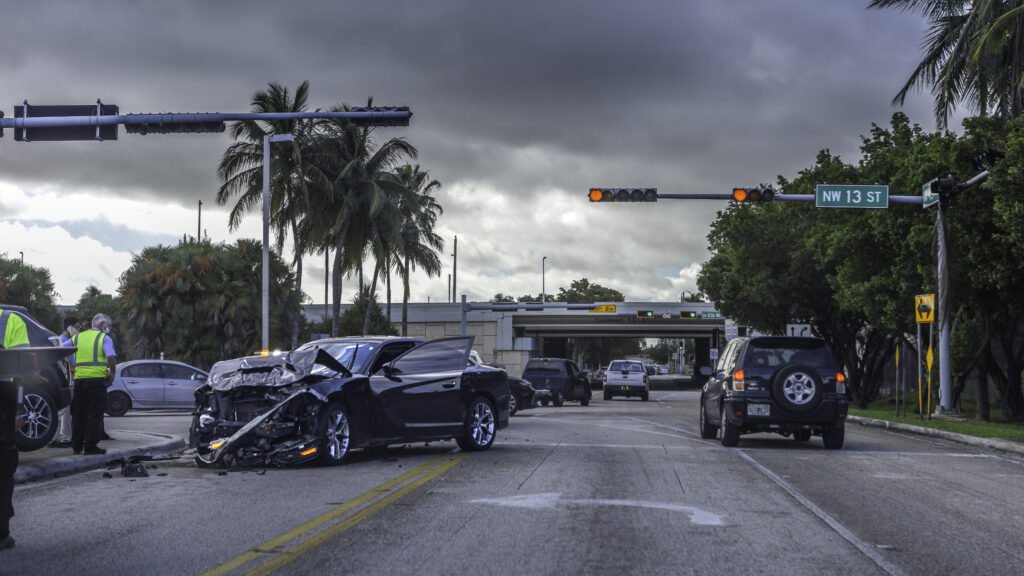Raleigh, NC: (919) 277-9299

When an airbag malfunctions during a car accident and fails to cushion an impact or prevent serious injuries, legal action may be necessary. One study by the National Highway Traffic Safety Administration (NHTSA) on vehicle safety technologies estimates that since the mid-1980s, airbags have saved more than 70,000 lives and prevented countless injuries, proving the effectiveness of these devices and the potential for harm when they don’t deploy. If a vehicle’s safety equipment doesn’t perform correctly, the manufacturer, designer, or marketer of the device may be responsible.
Your recovery from an accident involving a defective airbag may require a claim against the faulty device manufacturer and the negligent driver who caused the collision. Pursuing separate yet related claims requires strategy, and Bell Legal Group can help!
Steps After an Airbag Malfunction
If you or your loved one was injured in an accident and the airbags did not deploy, you may have grounds for legal action. It is important to take the right steps after a car crash to protect your interests and support your recovery—if you’re unsure where to put your efforts in the aftermath of an accident, focus on these four tasks:
1. Seek a Medical Evaluation
When an airbag doesn’t deploy to help cushion the passenger or absorb impacts, the vehicle occupant’s body can experience catastrophic injuries. A rollover, head-on crash, or T-bone accident can cause serious injuries, and when an airbag fails to cushion the blow, a passenger can experience head trauma, chest injuries, internal damage, and even death. Some airbag injuries, however, aren’t immediately apparent without a medical professional’s evaluation.
Seeing a physician is essential to your recovery, but medical records will ensure the airbag failure and accident injuries are documented. Doctors’ treatment plans can also outline future therapy, medical procedures, and other upcoming treatments to help inform your claim damages.
2. Collect Evidence
Gather evidence at the scene of the accident—if you’re able. Items of importance include the contact information for the other driver and witnesses, plus crash site photos. Try to capture these three elements in your pictures:
- The circumstances of the crash, including the exact location and any highway markers or traffic signs
- The vehicle’s exterior, illustrating where the impacts occurred, and any supporting photos of skid marks or roadway debris
- Your vehicle’s interior to show that the airbags did not deploy in the accident
When airbag accident injuries prevent you from gathering evidence, don’t worry. Bell Legal Group’s attorneys can handle these tasks on your behalf.
3. Contact a Lawyer
You may need to pursue multiple claims to garner your full recovery. While this sounds complicated, experienced personal injury and accident attorneys understand how to investigate and reconstruct complex car crashes to hold every responsible party liable. Contact us today to tell us your story and get the necessary support to exercise your legal options.
4. Investigate the Airbag Failure
Bell Legal Group can review your vehicle’s mechanics and functionality to determine what equipment failed and why. When airbags aren’t designed, manufactured, or installed correctly, they may not deploy when your vehicle crashes, leaving you susceptible to serious bodily injuries. Understanding the source of the failure is key to determining who may be liable for your harm. The following are elements our team may uncover when airbags do not deploy in an accident:
- Defective Sensors: A bad sensor can fail to detect that the nature of an accident, as well as its force and speed, should have prompted the airbag to deploy.
- Propellant Flaws: Incorrect or inadequate propellant can prevent deployment.
- Incompatible Equipment: A vehicle maker may select an airbag that isn’t compatible with the automobile and thus will be unresponsive or inadequate in a collision.
- Electrical Issues: Incorrect or faulty wiring can disrupt the airbag’s deployment system.
- Improper Materials: Ineffective materials or incorrect propellant can interfere with airbag performance.
If you still have unanswered questions about an accident in which your airbags didn’t deploy, please contact the Bell Legal team. We’re ready to help.
